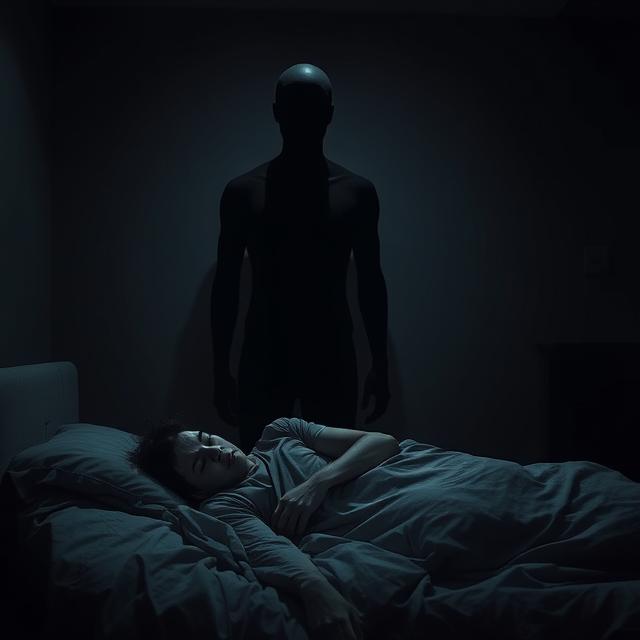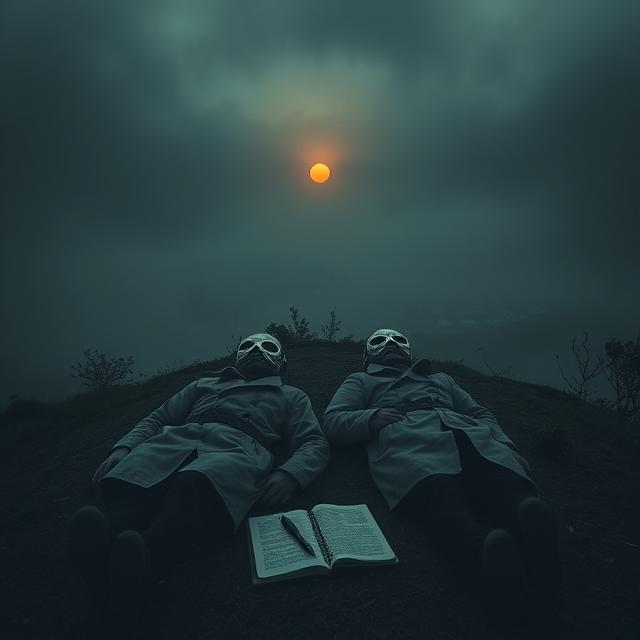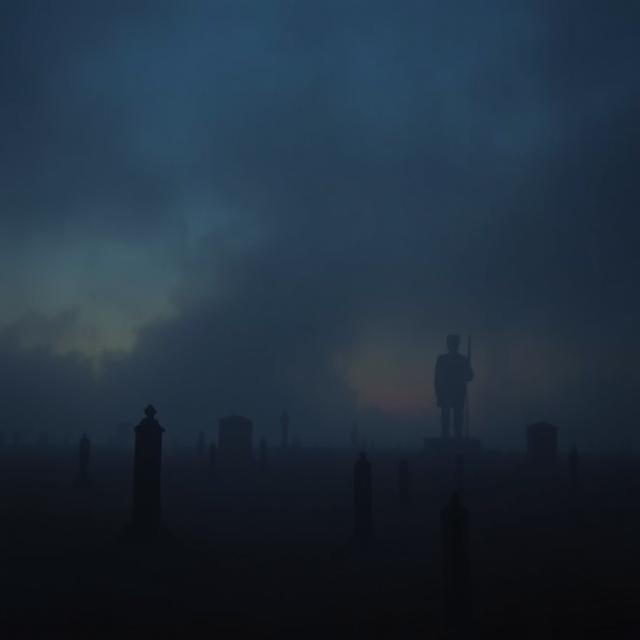Imagine waking in the dead of night, your mind fully alert, your senses keen, yet your body is utterly, terrifyingly paralyzed. You can see your room, hear the faint sounds of the night, but you cannot move a single muscle, cannot scream, cannot even utter a whisper. And then, from the periphery of your vision, or standing directly over you, a figure emerges from the gloom. It is vaguely human-shaped, but its most unsettling characteristic is its absolute lack of a face – no eyes, no nose, no mouth, just a smooth, featureless void where a countenance should be. These are “The Silent Ones,” chilling entities reported by countless victims of sleep paralysis across cultures and continents, prompting a terrifying question: Are they mere tricks of the mind, or are they visitors from another realm, preying on our most vulnerable state?
Sleep paralysis (SP) is a fascinating yet terrifying parasomnia, a state that occurs when a person wakes up during REM (Rapid Eye Movement) sleep but their body remains in the state of muscle atonia, the temporary paralysis that normally occurs during REM sleep to prevent us from acting out our dreams. The brain is awake, but the body is still “asleep.” This disorienting state often lasts from a few seconds to several minutes and is frequently accompanied by vivid, often terrifying, hallucinations.
These hallucinations are typically classified into three types:
- Intruder hallucinations: The perception of a threatening presence in the room.
- Incubus hallucinations: A feeling of pressure on the chest, often accompanied by difficulty breathing.
- Vestibular-motor hallucinations: Sensations of floating, flying, or out-of-body experiences.
It is within the realm of “intruder hallucinations” that reports of “The Silent Ones” or “Faceless Entities” predominantly occur. While shadow figures, cloaked individuals, or even traditional demons are common, a specific subset of reports describes an entity uniquely terrifying for its very lack of definition.
The consistent characteristics reported by those who encounter “The Silent Ones” during sleep paralysis are profoundly unsettling:
- Absence of Facial Features: This is the defining trait. The entity might have a head shape, but where eyes, nose, and mouth should be, there is only smooth, dark, or indistinct void. Sometimes, the face appears blurred, distorted, or simply missing, as if erased.
- Humanoid Shape: The entities are typically described as roughly human in form, often tall and slender, or sometimes cloaked/hooded, making them appear like dark silhouettes.
- Silent Observation: They rarely speak or make distinct noises. Their presence is often characterized by silent, oppressive observation. They just are there, watching, which can be even more terrifying than direct interaction.
- Menacing Aura: Witnesses report an overwhelming feeling of dread, terror, or intense malevolence emanating from the entity. This is not just fear of the unknown, but a profound sense of being in danger.
- Proximity and Imminence: The entity often appears very close to the victim, sometimes standing over the bed, sitting on the chest (combining with incubus hallucinations), or even slowly approaching from a distance within the room.
- Attempted Physical Interaction (Rare but Terrifying): In some accounts, the faceless entity may attempt to reach out, touch, or even physically interact with the paralyzed victim, intensifying the terror of helplessness.
- The Uncanny Valley of the Mind: The human brain is wired to recognize faces. The absence or distortion of facial features on an otherwise human-like form triggers a primal alarm, creating a deep sense of unease and a violation of cognitive expectations.
The experience of being visited by The Silent Ones is often profoundly traumatic. Victims describe waking up drenched in sweat, heart pounding, and a lingering fear that can affect their sleep for days or weeks. For many, these are not just nightmares; they feel undeniably real, blurring the lines between waking life and hallucination.
Interpretations and Theories:
The phenomenon of “The Silent Ones” and other sleep paralysis hallucinations sparks a perennial debate between scientific and supernatural explanations:
A. Neuroscientific and Psychological Explanations:
- Brain’s Default Mode Network: During sleep paralysis, the brain is in a peculiar state. The limbic system (responsible for emotion, especially fear) is highly active, while the motor cortex (for movement) is inhibited. The brain tries to make sense of this disjunction.
- Sensory Deprivation & Hypervigilance: In a dark, silent room, the brain tries to interpret minimal sensory input, often creating vivid hallucinations to fill the void. The heightened state of awareness during SP can turn any shadow or ambiguous shape into a perceived threat.
- The Brain’s Face-Recognition System: Our brains are hardwired to detect faces. When there isn’t enough visual data to form a complete face (e.g., a dark silhouette or a blurry image generated by the brain), the mind might default to a terrifying “non-face” or a distorted one, which is even more unsettling than a monstrous but recognizable visage.
- Primal Threat Response: The feeling of pressure on the chest (incubus) combined with the paralysis can trigger ancient survival instincts, causing the brain to generate “intruders” to explain the feeling of being held down or unable to breathe.
- Cultural Priming/Narrative Influence: In the age of the internet, shared stories and creepypastas about “Black Eyed Children” or “Shadow People” can subconsciously prime individuals. If someone experiences SP, their brain might draw upon these familiar narratives to construct the hallucination. This doesn’t mean the hallucination isn’t terrifyingly real to the experiencer, but that its form might be influenced by cultural knowledge.
B. Paranormal and Supernatural Explanations:
- Demonic Entities/Malevolent Spirits: Many victims interpret their encounters as demonic attacks or visits from malevolent spirits. The overwhelming sense of evil, the paralysis, and the feeling of being drained of energy align with traditional beliefs about such entities preying on vulnerable souls.
- Shadow People: The “Silent Ones” are often grouped with the broader “shadow people” phenomenon, where individuals report seeing dark, humanoid silhouettes, particularly in the periphery of vision, often associated with negative energy or spiritual oppression.
- Interdimensional Beings: Some theories suggest these entities are not ghosts but beings from other dimensions, occasionally “slipping through” into our reality, particularly when the veil between dimensions is thin (as might occur during the liminal state of sleep).
- Alien/Extraterrestrial Observation: A more fringe theory links them to alien entities or hybrids observing humans, perhaps as part of abduction scenarios, with the paralysis being a form of incapacitation.
The enduring terror of encounters with “The Silent Ones” during sleep paralysis lies in the profound sense of helplessness. To be completely aware yet utterly powerless while a non-human, faceless entity invades one’s most personal space is a deeply traumatic experience. It blurs the lines of reality, leaving victims questioning their sanity and the very nature of existence.
While neuroscience offers compelling explanations for why the brain generates such vivid and terrifying hallucinations during sleep paralysis, the sheer consistency of “Faceless Entities” across diverse individuals with no prior knowledge of the specific legend still fascinates paranormal researchers. Whether they are the brain’s terrifying glitch, or a glimpse into a darker reality, “The Silent Ones” continue to haunt the borders of our sleep, their empty gazes a chilling reminder of the unknown that lurks just beyond our waking comprehension.
Want to explore the shadows even deeper? For more chilling cases like this, visit SinisterArchive.com, where the legends are real.




